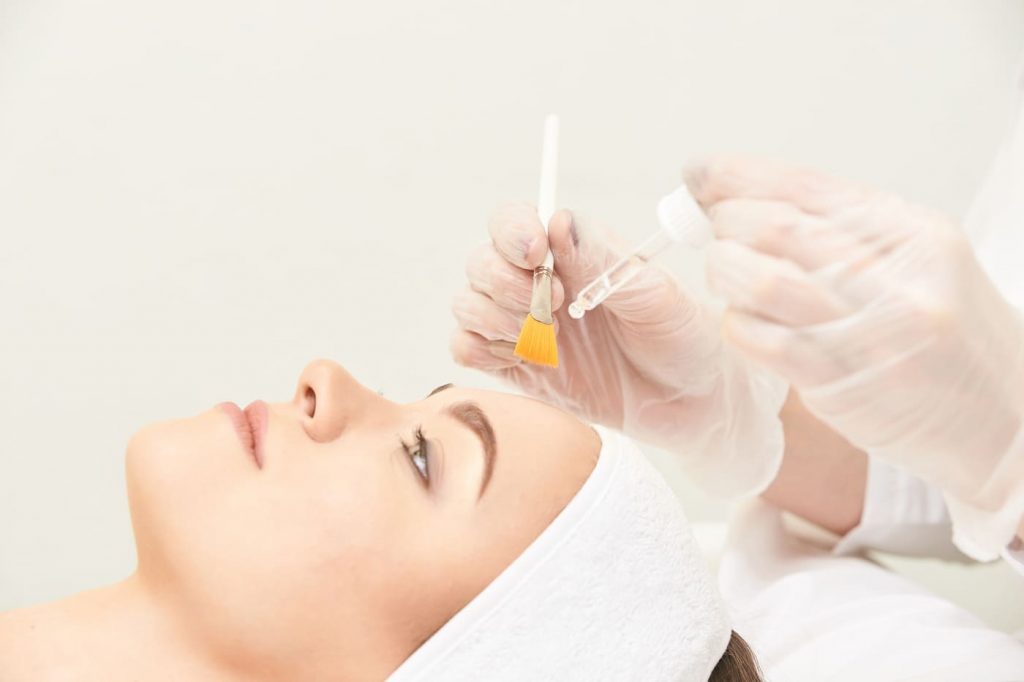Chemical peel: everything you need to know before doing it
Depending on your skin-care goals, your dermatologist may recommend that you get a chemical peel.

Depending on your skin-care goals, your dermatologist may recommend that you get a chemical peel.

There’s no shame in admitting we’re always looking for new ways to improve our appearance – especially our skin. The never-ending options of products and lines that claim to do wonders for your complexion can be overwhelming. I can’t begin to tell you how many times I’ve stood in an aisle just staring at a million different bottles, completely clueless. If you’ve been searching for a more permanent fix to get that flawless, glowing look, brace yourself! The search is over! Chemical peel are here to answer our prayers.
Let’s get real, chemical peel just sounds scary and the thought of them being brand new doesn’t help. Here’s the thing- they’re not brand new at all!
Think of it this way, if you would have mentioned the word Botox about ten years ago, people would have shuttered. The idea of something invasive catching on just didn’t seem realistic. Fast forward a decade – Botox has become the most popular nonsurgical beauty procedure on the market. Seriously, it’s become about as normal as getting a haircut. People didn’t begin to get comfortable with the idea of Botox until positive testimonials and amazing before & after photos started taking over the beauty world. This treatment is no different.
As we know, our skin is our biggest organ; always changing, always exposed. Over time, the wear and tear of life take a toll on our skin health, regardless of how much we protect it. Everything from cold weather to sunspots and, of course, the unstoppable curse of aging, attributes to the appearance of our skin. A chemical peel strips away imperfections such as those, as well as many others by shedding the top layers of your skin.
If you’ve ever had a sunburn that started to peel, you’ve already experienced the biggest part of the treatment healing. Once the peel is applied to the face, neck, hands, and or decolletage, it begins to banish imperfections by peeling away damaged skin allowing healthy, new skin cells to surface. Beautiful, baby soft skin is on the way!
The healing process can take up to a few weeks and you can expect to be a little sore. Your skin will have just undergone a pretty intense procedure, so prepare yourself for some redness as well. How red and sore you will be is usually determined by the intensity of the peel. Some patients have claimed to only peel for a day or two, others have said the peeling continued for weeks; each skin type encounters a different recovery time.

After choosing a reputable board-certified plastic surgeon or dermatologist, the first step is to schedule a pre-procedure consultation to discuss your reasons for wanting a chemical peel and the expectations of treatment. Your health history and medications will be reviewed to ensure you are a suitable candidate for the procedure. Next, a physical exam of the skin is performed to assess skin thickness, health and condition. Photographs may be taken to document the pre-procedure skin condition.
During the 2-4 weeks before your scheduled treatment, there are a set of preparation activities performed to optimize the efficacy of treatment, called “priming.” UV exposure should be limited, and a broad-spectrum sunscreen should be applied every morning. Lastly, waxing and dermabrasion of the face should be avoided.
The goal of these activities and recommendations is to thin the top layer of the skin, enhance penetration of the product, accelerate healing and reduce the risk of complications such as hyperpigmentation and scarring. The day prior to your procedure, the face should be washed with non-residue soap. Moisturizers and make-up should be avoided.
The treatment is done in a dedicated office room with appropriate lighting and ventilation. You will be lying down in a supine position, and your eyes will be closed for the procedure with appropriate eye protection. A neutral paste may be applied in areas around your eyes, nose and mouth to prevent the chemical solution from pooling in those areas. For deeper peels, a relaxing or pain medicine may be given right before the procedure. You may feel some mild tenderness while the chemical peel is on your skin. Upon completion of the procedure, a neutralizing wash or cool compress may be used on the face.
After a chemical peel, your skin will be likely red and appear irritated. Deeper chemical peel may result in increased redness and swelling. It is also normal to feel some continued burning or stinging. Makeup can usually be worn the next day for light peels, and after a week for medium peels. It may take a few months for the skin to fully return to normal and show complete results of the peel
This treatment is a quick, safe and cost-effective method for skin rejuvenation. Successful chemical peeling is dependent on the proper matching of a patient’s motivation for the procedure and the appropriate peeling agent. Be sure to let your doctor know of any pre-existing skin conditions you may have.
Remember! Stay moisturized to stay glowing!
